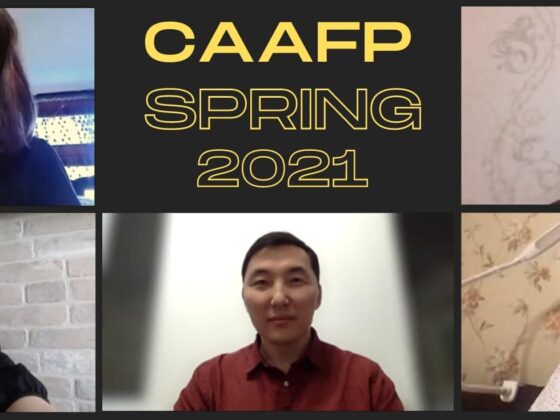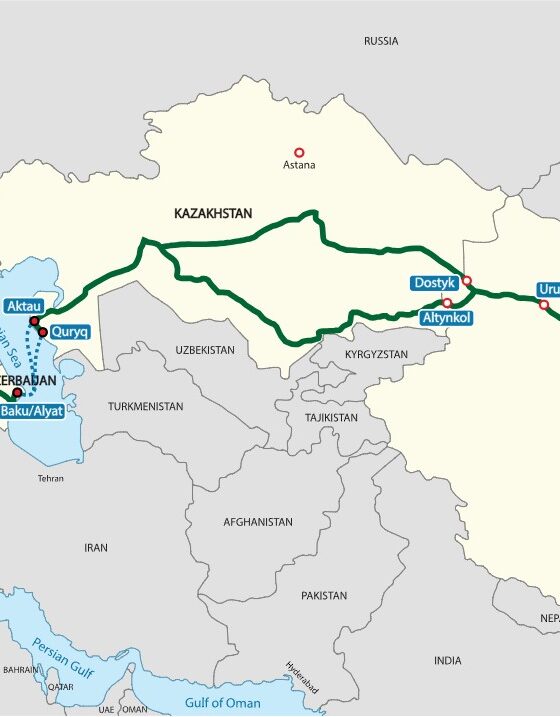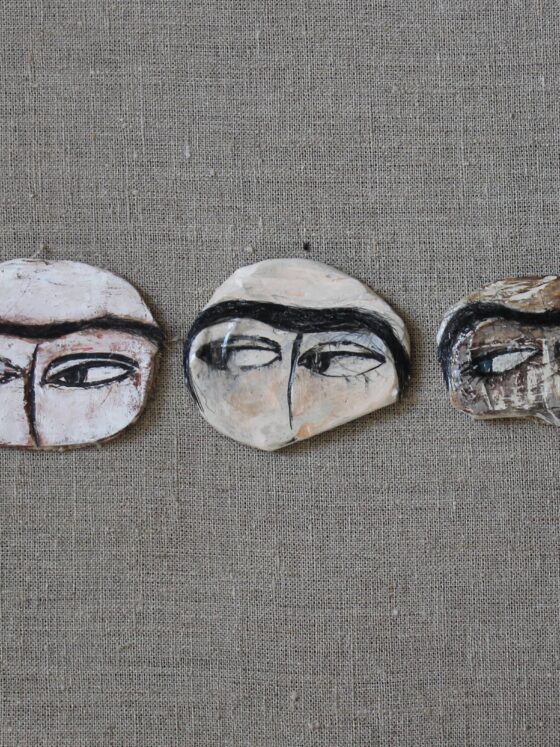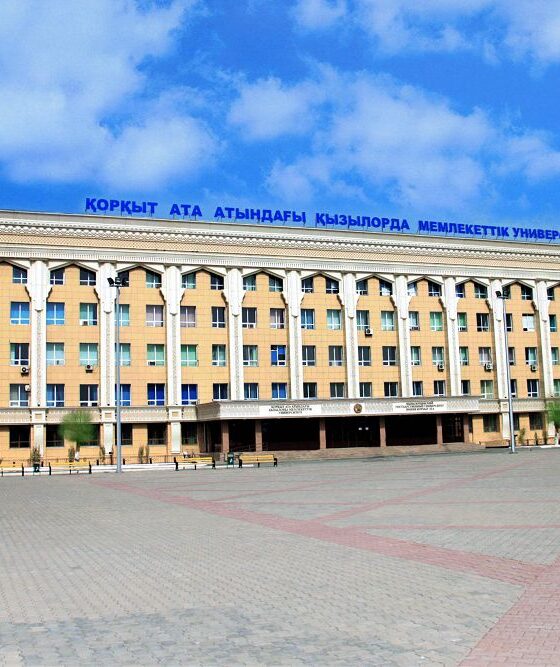
Nazerke Mukhlissova is currently a student at Nazarbayev University, Nur-Sultan, Kazakhstan, double majoring in Political Science and History. Her paper on Valikhanov and Kazakhstani public memory has been accepted by two international conferences: Istanbul International Modern Scientific Research Congress (June 4-5, 2021) and VI International European Conference on Social Sciences (June 4-6, 2021). She has also been involved with the largest COVID-related policies database worldwide, the CoronaNet research project. Her research interests are Eurasian public policy, the history of Soviet peripheries, regional politics, and the EAEU. You can contact her through her LinkedIn profile or on Twitter.
This article highlights the tendency of modern Kazakhstani authorities to bluntly accommodate the memory policy inherited from the Soviet past. The article focuses on the case of a national role model heavily promoted by the government: Shokan Valikhanov. The Soviet authorities praised Valikhanov as a secular scholar striving toward European civilization, a framing that has the effect of depicting in a negative light both Islam in the steppe and Kazakh indigenous culture. Even though seemingly incompatible with modern Kazakhstani rhetoric, the figure and image of Valikhanov have become a pillar of public identity today. His images are used in government campaigns, universities and schools are named after him, and special events celebrating him are subsidized by the government. With time, the public took over the depiction of Valikhanov, including promoting anti-Russian conspiracy theories about his death. This study demonstrates how the Soviet and then Kazakhstani authorities conveniently claimed Valikhanov in their efforts to create a new national memory.
Shokan Valikhanov (1835-1865) is a famous ethnically Kazakh scholar, Russian Imperial servant, and ethnographer who wrote about the history and geography of the Central Asian steppe. He authored many articles and books that are nowadays considered some of the most important documentations of the Central Asian steppe and its culture. In his day, Valikhanov’s scholarship was acknowledged by many prominent figures: he served, for instance, as Dostoyevsky’s primary source of information about Islam and steppe culture.[1]
Interestingly enough, Shokan Valikhanov now plays a significant role in the history of modern Kazakhstan. He is a pillar of Kazakhstani identity: his image is used in government campaigns, educational institutions are named after him, and he is generally considered one of the first ethnic Kazakhs to receive recognition from the Russian Empire and pursue the preservation of indigenous culture and geolocations. Modern Kazakhstani authorities use Valikhanov to support tradition- and nation-building, creating a new collective memory of him as a nationbuilder. However, this approach is not novel; it was inherited from the Soviet authorities.
That being said, today’s Kazakhstani authorities do not comprehensively engage with Valikhanov’s works. Unlike the literature of Altynsarin and Abay, his works are not included in the school curriculum. Instead, they invoke the name, legacy, and image of Valikhanov to suit the modern depiction of national tradition in Kazakhstan. With the more recent involvement of the public, however, this narrative appears to have been undergoing changes.
Before investigating Valikhanov’s image in the Kazakhstani public sphere, it is necessary to consider why the authorities decided to use it to form a new national identity in the first place. The way modern states reform and create public history has been investigated from various theoretical viewpoints. Grotenhuis[2] argues that weak, fragile states face an uphill struggle in their efforts to create governance and a united nation, prompting them to seek ways to legitimize their own authority. Grotenhuis also highlights the difference between nation-building and state-building. Although these processes are highly integrated, there are differences between the two. State-building is a more formal process that includes specific end goals, has visible means (such as laws and institutions), and is usually led by elected political leaders. For its part, nation-building does not have a pre-determined result; it is more of an ongoing process.[3] Nation-building also heavily involves citizens.
In European history, the process of nation-building in many countries, though not all, happened organically and took centuries to develop. But countries of the Global South did not have the same luxury; the emergence and formation of states usually happened abruptly and unexpectedly. Most former peripheries had to act within short timeframes and with limited resources. Applying that theoretical framework to the case of Kazakhstan, the collapse of the Soviet Union in 1991 happened without any significant warning. The Kazakhstani authorities tried until the very end to preserve the USSR and were the last ones to leave the Union. Unexpectedly left on their own with a highly ethnically diverse state and almost no resources for organic and coherent nation-building, they had to become the main actors in charge of both the nation- and state-building processes, which took place simultaneously.
The Need for a Reclaimed Historical Past
Nation- and state-building are usually led by different sets of actors.[4] However, where there is a collapse of established public memory, creating a new memory policy is resource-intensive, according to Nora.[5]. As such, it is worth considering whether the new memory is entirely distinct from the old: how differently is Valikhanov portrayed today than he was in the past?
Valikhanov gained a special place in the Soviet pantheon, recognized as a figure who paved the way for discovering Central Asia and one of the first Kazakh scientists. One of the most prominent examples of his renown is a series of Soviet TV shows dedicated to him.[6] In the series, Valikhanov was praised as an expert diplomat who opened up his people’s soul and culture to the Russians—the first Kazakh enlightener. In a 1945 book dedicated to Valikhanov, Soviet representatives from the Academy of Sciences argued that Valikhanov found himself at a crossroads of cultures. He was presented with a choice: “to pursue Western European civilization or to come forward toward the Muslim East with its cultural backwardness.”[7] Apparently, he made the right choice: the authors went on to depict his involvement in imperial circles, science, and periphery exploration as some of the most outstanding achievements of steppe inhabitants.
In his writings, Valikhanov’s view of religion coincided with Soviet ideological orthodoxy. He wrote that “instead of doing science as our ancestors did, the people of Central Asian Steppe wasted their time on religious ceremonies and routines […] the people of the Steppe were ‘demoralized by Islam.’”[8] But this rhetoric meshed less well with the philosophy of independent Kazakhstan, whose authorities declared the right to religious freedom and the rehabilitation of Islam as part of national culture. One would therefore expect Valikhanov’s anti-Muslim attitudes and portrayal of the Steppe as backward to have become problematic in independent Kazakhstan.
Continuity with Modern Portrayal
With that in mind, it is worth investigating how Valikhanov has been portrayed in post-Soviet Kazakhstan. His figure is relevant to Kazakhstan’s nation- and state-building missions because he was one of the few sources of national identity left after the collapse of the Soviet Union. The memory of Alash had been suppressed by the Soviet authorities and was in need of a longer process of revival. Thus, although the contemporary state could have looked to Alash and other 1920s figures, it opted out for more consensual figures like Abay and Valikhanov. Indeed, it is only in more recent years that young citizens of Kazakhstan, in particular, have begun to look to Alash figures.
Abay’s literature was relatively ethnocentric and uncontroversial. His Words of wisdom were neutral and used to propagate some personalistic features rather than a particular political thought. Regarding Valikhanov, the authorities took a more nuanced approach, highlighting only those parts of his works that were convenient to the new national ideology. The pantheon of representatives of Kazakhstani national identity has thus not been chosen so much as inherited.
Let us now turn to the instrumentalization of Valikhanov’s image the public sphere. At the end of 2020, Karaganda State University held an event celebrating the 145th anniversary of his birth. Interestingly enough, in the report on the event, Valikhanov is portrayed simply an outstanding representative of Kazakhs in the Russian Empire who was able to earn the respect of his Russian colleagues, something few ethnic Kazakhs at the time were able to achieve. The presenters, most of whom were university professors from Kazakhstan and Moscow, lectured about different periods of Valikhanov’s life and depicted him as a man that “loved his people… wished them good and wanted to serve the future of his people.”[9] They also mentioned his achievement of writing down the “Manas” epic. They did not, however, discuss the content of his writings; they also avoided citing any of his works.
Another example of how Valikhanov has been used to create national public memory is an article published by Nur.kz, a popular local media outlet. In this text, Valikhanov is portrayed as an individual who was attracted to science and wanted to open up Asian culture to the world. As with the aforementioned event devoted to Valikhanov, praise seems to be directed more at Valikhanov’s ability to climb the career ladder in Imperial Russia despite being a Kazakh than it does to the content of his works and the benefits that they have brought. When people write about Valikhanov’s legacy for Kazakhstan, they mainly refer to his successful career, and his ability to capture the cultural and geographical features of the Steppe.
There are two more points in the Nur.kz article that are worthy of note. First, the writers mention conspiracy theories about the death of Valikhanov, specifically that his death might have been an intentional killing. Second, they write that Valikhanov’s fame was recognized far beyond Russia—namely by German geographers—and that he was a diplomat, a bridge between Russia and the Steppe.[10]
In their respective forums, both academic production and the media seem to promote only one side of Valihanov’s story and hide other, less consensual, aspects. This approach resembles the Soviet-style model of communication, where there is no space for public discussion, but rather a state-sponsored consensus on issues.[11]
A New Turn in Valikhanov’s Public Depiction
A popular narrative in today’s Kazakhstan relates to conspiracy theories about Valikhanov’s death. People seem not to believe that a 30-year-old ethnographer with nomadic ancestry caught tuberculosis during one of his expeditions and eventually passed away. One of the most widespread beliefs is that the Russian Empire assassinated him because he was no longer doing useful. Retired KNB Colonel Bolat Kystaubaev, in his book The Secret of Chokan Valikhanov; Pioneer Truth newspaper correspondent Irina Strelkova; local historian of Almaty Andrey Mikhailov; and many more consider Valikhanov’s assassination more likely than the official narrative. Informburo.kz, a popular media outlet, produced a piece called “The Mystery of Shokan Valikhanov.” The authors of that article argue that “Valikhanov, who could not remain indifferent to the fate of his people, became dangerous with his ‘harmful’ influence on the minds of Kazakhs.”[12] Like many other media outlets in Kazakhstan, they seem to assume that Valikhanov’s ethnic background should determine some of his actions and enforce a particular type of behavior. While it might be true that Valikhanov disapproved of the increased brutality and inefficiency of the Imperial army in the Steppe as well as the Islamic transformation of the Steppe, there is no solid evidence that the Russian authorities purposely eliminated him, especially considering his loyalty to the Empire.
Moreover, the modern depiction of Valikhanov and his death appears to ignore the complex profile of the ethnographer. Valikhanov was not one of “the people of the Steppe,” but a member of the Steppe elite and aristocracy: his father occupied important positions in the Russian administration. But this reality is sidelined: the only factor that seems to matter is Valikhanov’s ethnicity and how it impacted his actions. Such narrow-minded treatment of Valikhanov’s figure is due to the modern notion of “nationality,” which creates a belief that being Kazakh was somehow relevant to his career, decision-making and his attitude toward people of the same nationality. Yet the idea of national unity was not something that existed when Valikhanov was alive.
The variety of popular conspiracy theories may suggest that the nation-building process is becoming internalized by the people and is taking a new turn. Kazakh nationalists are trying to embed their anti-Russian feelings in depictions of the lives of such figures as Valikhanov. Media articles, scholars, and schoolteachers continue to informally support these theories. The widespread reach of conspiracy theories suggests that these narratives are, in general, positively assessed. Regardless of the lack of proof for their claims, they continue to flourish and strengthen, as conspiracy theories are a matter of interpretation, not facts and evidence. Given that the hyper-nationalistic segment of Kazakhstani society is growing, such theories are likely to persist.
One of the most widespread perceptions of Valikhanov is that he should be considered a role model because he was one of the people who helped enable Kazakhstan to define its national borders. Valikhanov’s observations are thus claimed to have had an impact on today’s conditions. There are two things to consider here. First, it is questionable to what extent the Soviet authorities considered the observations of a 19th-century Kazakh ethnographer when drawing the borders. Valikhanov wrote extensively on the economics of the Steppe, namely trade in Bukhara, Khiva, and Kashgar, as well as economic relations with China.[13] However, there is no clear evidence that his letters, observations, and maps were determinative for—or were even considered by—the Soviet authorities who decided the modern borders of Kazakhstan in the 1920s.
Second, if Valikhanov should be appreciated and is posed as a role model due to the value of is ethnographic works, then many other people should also be recognized. To take one example, Aleksei Levshin was the first to write down local, indigenous poems, cultural and geographical texts. Valikhanov came later, and even though he managed to add more cultural writings, his notes and observations were not as transformational as they are claimed to be. In a way, Valikhanov’s texts perpetuated the statements and opinions of Imperial servants without adding substantial new knowledge that shed greater light on Central Asia.
Conclusion
Regardless of the depiction, Valikhanov remains a highly consequential figure in Central Asia to this day. The heroes of the “Manas” epic, which Valikhanov transcribed, have become national role models in Kyrgyzstan. Although Valikhanov noted that the figure of Manas was problematic and morally questionable, Kyrgyzstani authorities since Askar Akayev have glorified and promoted him as a national unifier who pursued state- and nation-building.[14]
In both Soviet and Kazakhstani narratives, there is a heavy focus on Valikhanov’s ethnicity, as both have tried to enforce a unified, state-sponsored interpretation of the past. If the public were left to decide, national discourse might end up including unexpected interpretations and an undesirable range of opinions. That being said, today Kazakhstani authorities have no real interest in propagating Valikhanov’s texts themselves much more controversial.
Yet changes are afoot. The authorities seem to be losing their control over the memory narrative, with different interpretations arising among the public. In conclusion, I would argue that Valikhanov’s belief in the civilizing mission of nomadic society is not really compatible with today national narrative celebrating indigeneity. Valikhanov and his family were a successful example of Russified, assimilated Kazakhs who were able to pursue education and a successful career by recognizing the legitimacy of Russian Imperial rule at the expense of the autonomy of the Steppe. It may be now time for Kazakhstani authorities to re-assess some of the role models they are promoting.
[1] Michael Futrell, “Dostoyevsky and Islam (And Chokan Valikhanov),” The Slavonic and East European Review 57, no. 1 (1979): 16-31.
[2] René Grotenhuis, “Nation-Building and State-Building and the Challenge of Fragility,” in Nation-Building as Necessary Effort in Fragile States (Amsterdam: Amsterdam University Press, 2016), 73-92.
[3] Ibid., 80.
[4] Ibid., 73-92.
[5] Pierre Nora, “Between Memory and History: Les Lieux De Mémoire,” Representations 26 (1989): 7-24. doi:10.2307/2928520.
[6] “Shoqan Ualikhanov, Legendarnyi Choqan” film (Kazakhfilm, 1983, 1984), accessed April 4, 2021, https://www.kino-teatr.ru/kino/movie/sov/8539/annot/.
[7] H.G. Aidarova, “Chokan Valikhanov” (Alma-Ata: KazOGIZ, 1945), accessed April 4, 2021, http://books.e-heritage.ru/book/10083617, 6.
[8] John Mitchell and Robert Mitchell, The Russians in Central Asia: Their Occupation of the Kirghiz Steppe and the Line of the Syr-Daria: Their Political Relations with Khiva, Bokhara, and Kokan: Also Descriptions of Chinese Turkestan and Dzungaria; by Capt. Valikhanof, M. Veniukof and [others] (London: Edward Stanford, 1865), 48.
[9] “K 185-letiiu Shoqana Ualikhanova,” Karaganda State University, accessed April 3, 2021, https://www.kstu.kz/250285/.
[10] “Shoqan Ualikhanov: Biografiia Kazakhskogo uchenogo,” Nur.kz, accessed April 3, 2021, https://www.nur.kz/fakty-i-layfhaki/1678938-sokan-ualihanov-biografia-kazahskogo-ucenogo/.
[11] Thomas Remington, “The Mass Media and Public Communication in the USSR,” The Journal of Politics 43, no. 3 (1981): 803-17. doi:10.2307/2130638.
[12] “Choqan Valikhanov i Russkie uchenye.” Tarikh – Istoriia Kazakhstana, accessed April 3, 2021, http://www.tarih-begalinka.kz/ru/timetravel/page3529/.
[13] Michael Fedorov, “The Works and Archive of Chokan Valikhanov as a Source of Information about the Trade and Prices in East Turkestan and Agacent Regions of Central Asia,” Central Asiatic Journal 45, no. 2 (2001): 230-42.
[14] Andrew Wachtel, “A Tale of Two Heroes: Kyrgyzstan in Search of National Role Models,” Region 5, no. 1 (2016): 1-16.













